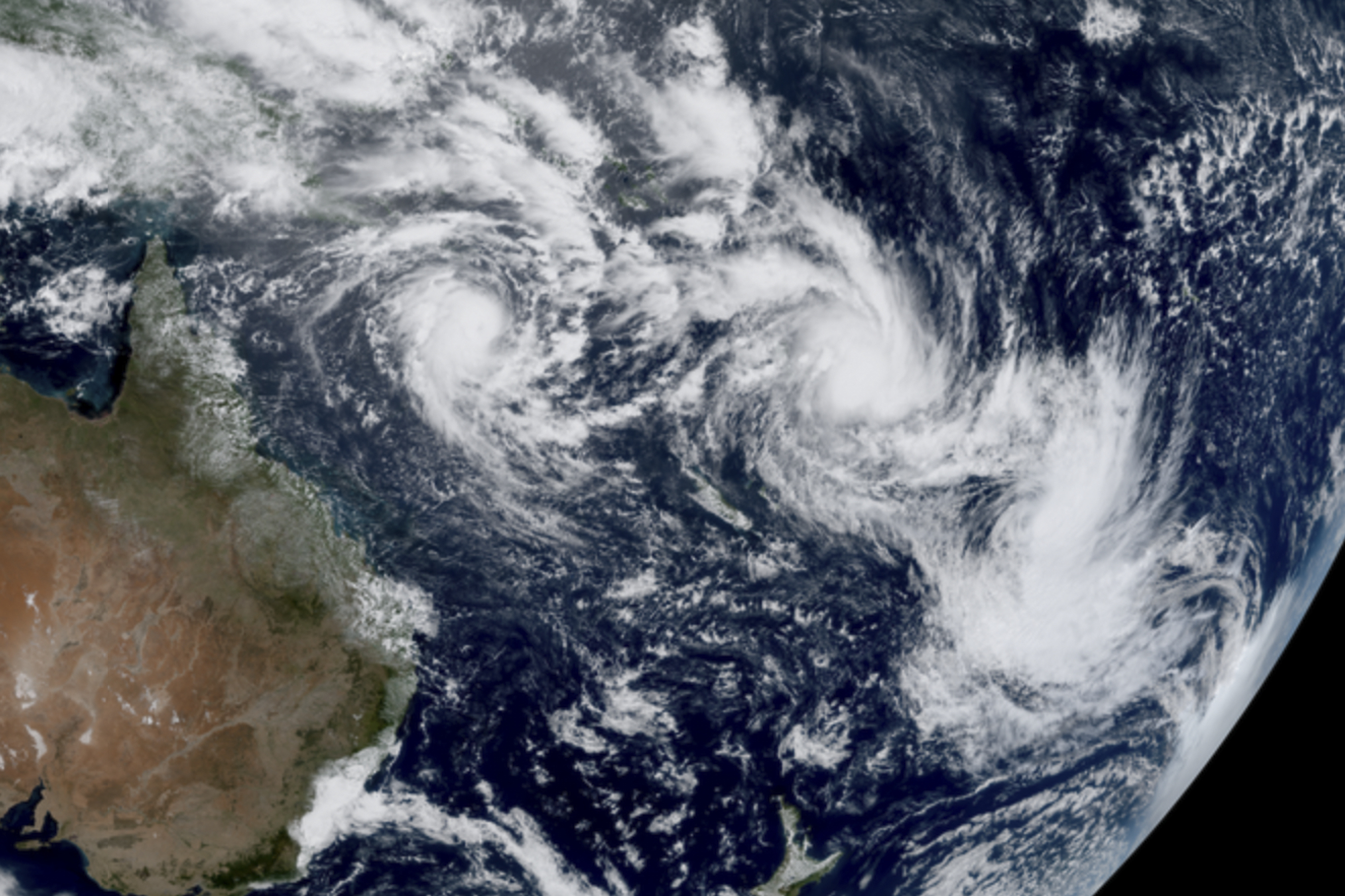
Australia’s east coast is bracing for abnormally high tidal surges, intense rainfall, damaging winds and life-threatening flooding, as a cyclone is forecast to make landfall near the country’s third-biggest city later this week.
Alfred, a category one storm, was about 465 kilometers northeast of Brisbane and moving in a southeasterly direction at 20 kilometers per hour around 11 am local time, according to the Bureau of Meteorology. The cyclone, which is expected to slow and turn westward toward the southeast Queensland coast from Tuesday, is forecast to intensify into a category two storm later Monday, the bureau said.
Abnormally high tides are expected to continue between the southern Queensland and northeastern New South Wales coasts, while intense rainfall, life-threatening flash flooding and damaging wind gusts of up to 120 kilometers per hour will develop in the same region.
ALSO READ: Rare tropical cyclone likely to impact northern NSW state of Australia
The impact on the mainland will start to ramp up from Wednesday prior to the cyclone’s expected landfall just north of Brisbane on Thursday, the Bureau of Meteorology’s Steve Bernasconi said at a press conference on Monday.
“Winds will start to be noticeable and will be becoming damaging. We would expect a coastal hazard warning around this time,” he said. “Tides will be abnormally high, and Wednesday is when we should start to see our rainfall increasing into the evening with potential for locally intense falls.”
Alfred would be the first tropical storm to affect Brisbane since 2017, when the remnants of Cyclone Debbie, which had wrecked havoc in north Queensland, brought heavy rain and strong winds to the area. The city, with a population of more than 2.5 million people, has been selected to host the 2032 Olympic Games.
ALSO READ: Australia govt pledges temporary beer tax freeze as election looms
The cyclone also marks an unusual occurrence for New South Wales, said Bernasconi.
“We don’t often have Tropical Cyclone watches and warnings in the New South Wales jurisdiction — the most recent one was back in 1990 with an event called Tropical Cyclone Nancy,” he said. “And prior to that, it wasn’t until 1974 with Tropical Cyclone Zoe.”
New South Wales Minister for Emergency Services Jihad Dib said New South Wales and Queensland emergency services were preparing to work together to tackle the storm, including by pre-positioning personnel.
“We’ve planned for the worst, but we hope for the best,” Dib said at the press conference on Monday.


